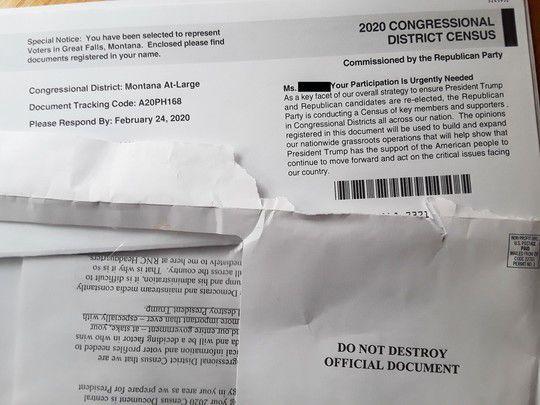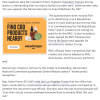LAS VEGAS (AP) — The swanky, billion-dollar casinos of Las Vegas are bedecked with shining towers, neon signs and eye-popping extravagance. But directly beneath the glitter, hundreds of homeless people live out of sight, in the dark, in a network of stormwater tunnels running below the city.
When census takers tried in September to count the nation’s homeless for the 2020 census, safety concerns prevented them from venturing into the Las Vegas tunnels.
The tunnels offer just one example of the difficulty in counting the portion of the homeless population that does not stay in shelters. A half dozen census takers around the U.S. told The Associated Press that they experienced problems that could cause the homeless to be undercounted — a situation that may cost some communities political representation and federal money.
America DePasquale, who lived in the tunnels from May 2018 until she moved into a detox facility last month, said she never saw census takers visit the area underneath the Las Vegas Strip.
DePasquale said she does not blame census takers for not attempting to enter the tunnels, but she said it might have helped if they had tried to go with community advocates who make frequent visits below.
“It takes somebody of a certain strength to go down there just regularly, “ she said. ”But I also find it kind of appalling that they wouldn’t go deeper and at least even try.”
The count of the unsheltered homeless was originally scheduled for last spring, but the Census Bureau delayed it until late September because of concerns about the coronavirus. The bureau identified 33,000 homeless camps for census takers to visit.
The Government Accountability Office warned earlier this month that the delay in the homeless count could affect the quality of the census data given the economic downturn caused by the pandemic. People who may have answered the census questionnaire last spring but later became homeless may not be recorded as homeless and may be living in a different place, the watchdog agency said in a report.
“Because people who experience homelessness are more likely than people who are housed to be members of minority groups, especially African Americans and Native Americans, the undercount contributes, modestly, to the serious undercount of minorities and poor people,” said Beth Shinn, a professor at Vanderbilt University who researches homelessness.
In San Francisco, a census taker said supervisors were confused about what to do and where to go. In Oklahoma City, many census takers did only a headcount without interviewing homeless people, so they missed gathering demographic information.
A census taker in Bakersfield, California, said a list of homeless sites they were given was outdated, and they were not allowed to interview people who appeared to be homeless if their locations were not on the list. Census takers were prevented from doing any counts in downtown St. Paul, Minnesota, because of racial injustice protests that were happening on the same night.
Deanna Helm, a census taker who participated in the homeless count in Northern California, characterized it as “a farce.”
“We were just chasing our tails that night,” she said.
Rainy weather in Spokane, Washington, kept enumerators like Joanne McCoy from doing their jobs.
“We didn’t get a good count at all. It should have been much better,” said McCoy, a census supervisor.
The Census Bureau said in a statement that the unsheltered homeless count is designed with the safety of census takers and those being counted in mind.
“As in previous censuses, the primary goal, and noted in census taker instructions, is to first get a headcount of people experiencing homelessness,” the statement said. “We do not want to create an unsafe environment for those living at the location or our census takers, so we may not conduct a full interview if it is unsafe to do so.”
The agency’s once-a-decade count helps determine $1.5 trillion in federal spending annually and how many congressional seats each state gets.
In Las Vegas, concerns about the homeless count were raised last October at a city council meeting. Las Vegas, along with surrounding Clark County, has an estimated 4,000 to 6,000 people living on the streets. The homeless population could be larger, since shelters are operating at reduced capacity because of pandemic restrictions, said then-City Manager Scott Adams.
“The bottom line is ... we could be undercounted by several thousand people in the city population,” Adams said. “Why is that important? It deals with apportionment for legislative seats, formula shares for federal funding, a whole range of issues.”
Census takers would face a lot of challenges if they tried to enter the tunnels on their own to interview residents, said Paul Vautrinot, who leads Shine a Light, a nonprofit that provides housing, counseling and other services to several hundred people living in the tunnels.
Drug use is common and conspicuous, according to community advocates who make regular trips into the dank passages to donate food and supplies. Hypodermic needles, rats and human waste are common sights, as is the low, steady flow of water through the tunnels. Some tunnels have mini-communities where a dozen or two dozen people set up tents or beds and share communal meals. Those who prefer solitude find their own section in the labyrinth.
Some people have few belongings. Others have relatively elaborate setups, with furniture or generators.
When Clark County runs an annual count of the homeless population required by the U.S. Department of Housing and Urban Development, staff and volunteer counters have a police escort. That effort is less intensive than the once-a-decade census and requires only a headcount, not a questionnaire.
Most people living in the subterranean channels would not be interested in speaking to strangers asking questions about their backgrounds, even though it might help bring resources to people living there, Vautrinot said.
“It’s a very daunting task to go walking down there, even after having done this for as long as I have and having lived there,” said Vautrinot, who lived in the tunnels from 2011 to 2014. “There are moments that you go down there and the hair on your arm raises up.”








































